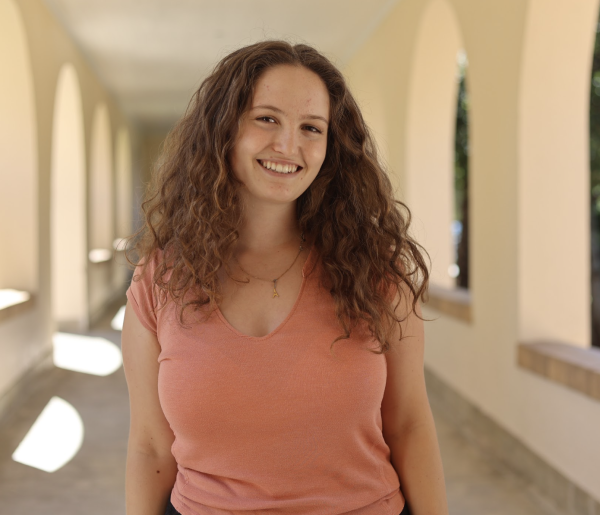Architectural Evolution of Palo Alto
The advancement of architecture in Palo Alto and its impact on gentrification and sustainability

Different styles of architecture can be identified by any person who walks down a street, however, what often goes unnoticed is the true meaning behind every property.
Specifically, throughout the neighborhoods of Palo Alto, the development of home design has evolved tremendously due to fluctuations in the housing market and the history of real estate and architectural industries.
Real estate developer Drew Hudacek has been involved in the Palo Alto market for many years and has recognized changes in the characteristics of homes in the Bay Area.
“As time has gone on, people have obviously changed taste, and the level of affluence has changed in Palo Alto,” Hudacek said. “People are making a lot more discretionary choices now for their tastes and their preferences.”
Prior to the increase in wealth in Palo Alto, the style of home composed by Joseph Eichler rose quickly to popularity.
“When you go all the way back to the times when Eichlers were built, [they] were effective, mass-produced houses and were very efficient in a lot of ways, including cost,” Hudacek said.
Although the majority of Palo Alto is still occupied by Eichler homes, as more fortunate people continue to move in, homes are now built more for their style than practicality.
Sotheby’s International realtor Noelle Queen primarily works with a group of sellers to prepare properties to go onto the market in Palo Alto, Menlo Park, Los Altos and more cities in the Bay Area. Queen jump-started her real estate career eleven years ago and has only sold in the Bay Area, providing her with a firsthand look at the tremendous progression of interior designs and home trends throughout the 21st century.
“The most significant design trend in the last seven years was the ‘modern farmhouse,’” Queen said. “Gray and white were the dominant wall colors of the last decade. White marble or light-colored quartz became the most popular countertop materials.”
However, this trend has dissipated post-COVID, and the market has become focused on newer houses composed of more traditional elements and furniture.
Averting from classic white modern tones, homes in the Bay Area have shifted to more neutral colors and eclectic styles.
“The modern farmhouse trend is definitely coming to an end,” Queen said. “Post-pandemic, we are seeing more earth tones and pops of color. More traditional furniture and finishes are making a comeback.”
As the Bay Area reconnects with nature, it continues to incorporate big windows into new homes.
“Now there are so many people having so much glass because people like to be able to look out and feel like they’re more a part of the outside,” retired architect Gene Lebel said.
Alongside older home features returning to the market, modern houses made of windows are evolving into the next trend, due to their functionality and sustainable elements.
“People have discovered it’s more fun to live in the more modern Eichler or more modern simple houses,” Lebel said.
Recently, people have been renovating their homes more than in the past, because if they are paying the high cost of living, they want exactly what they are looking for.
“It has to do with the price that people pay for housing or the cost of housing or the price of housing in Palo Alto and because housing is so expensive here, oftentimes people who are buying houses or thinking about building houses, they have the discretionary choice to really pay for what they want,” Hudacek said.
However, this leads to the issue of sustainability and the effects on the environment of tearing down and rebuilding homes for affluent Palo Alto residents. Enormous amounts of energy must be used in order to complete the construction of these new buildings, which also tend to be larger than they originally were.
“There are two ways to look at it from the standpoint of sustainability,” Hudacek said. “A lot of the houses being built today are much, much larger than they absolutely need to be, and that is not necessarily the most sustainable choice.”
Nevertheless, with newer upgrades such as insulation and appliances, these homes tend to have a greater amount of green elements once the home is in livable condition.
“It could be much more efficient, as far as how much energy it uses to either keep space [warm] or cool down space,” Hudacek said.
Not only is sustainability an issue when it comes to the evolution of newer homes, but the construction of these homes also poses a much larger threat to many residents living in the Bay Area. While there are many benefits to new homes, the implications of tearing down and creating more affluent buildings destabilize the economy for many.
Some people redesign or rebuild their homes for cosmetic reasons. However, building more expensive and modernized homes displaces current inhabitants in the area, which, in turn, causes the prices of homes to increase, as well as rent.
On the bright side, many organizations are unraveling this problem by reducing the displacement of vulnerable populations by revitalizing low-income neighborhoods.
An organization called the United Neighbors in Defense Against Displacement (UNIDAD), is composed of residents in California working together to promote healthy and equitable neighborhoods through planning. Maria Gutierrez works to combat financial pressure on lower income communities inside UNIDAD.
“Gentrification and Displacement are tied together,” Gutierrez said. “When a neighborhood is seen as more desirable oftentimes because of amenities (close to transit, close to the city, jobs) it makes it attractive for other maybe higher-income people to move into a neighborhood and therefore because they can afford to pay higher rents, rents rise and therefore community members who have been living there for many years are now displaced because they cannot afford the rent.”
As the price for more modern homes increases, the community’s history and culture are diminished through the influx of more affluent residences and businesses which surround poorer areas. UNIDAD is frequently working to help lower-income individuals stay in their home communities.
“We have an active campaign to ensure that tenants who are displaced have a right to return to the new apartments at comparable rents and that they have priority in being able to stay living in their community,” Gutierrez said.
The loss of affordable housing is accelerating the process of gentrification and has evolved into a much larger problem due to the high prices encompassing the Bay Area.
“We have seen blocks of a neighborhood be completely flipped, as in, not very many community members continue to live there,” Gutierrez said. “We continue to advocate for ‘Development without displacement.’”
Furthermore, Hudacek’s career happens to fall on the side that more housing, especially dense housing, and more supply are what’s needed. With many people being displaced, it is necessary that more housing is widely available at a more affordable cost.
“One thing that I am very passionate about is equity and inclusion and affordability and kind of the housing crisis,” Hudacek said. “One of the most hotly debated subjects is ‘how can Palo Alto or California solve the housing crisis?’, or ‘can it solve the housing crisis?’”
The housing crisis that Hudacek is referring to is how to make enough housing for the millions of people in California alone, and how to make sure those homes are set at a variety of prices for people who are looking to buy houses.
Overall, Palo Alto’s changes in the housing market stemmed from many different factors, and it will continue to evolve.
“I am a believer that growth is for places like Palo Alto, and nothing stays the same forever, and our town won’t stay the same forever,” Hudacek said. “But I think the things that can change are often feared by many people.”
Life is constantly changing, lives will continue to be affected, and finding a way to understand and maintain these progressions is the key.
“I think the change is good,” Hudacek said. “It’s necessary and we should embrace it, think about how to do it right, and supply more housing.”
Print Issue
Please click on the three vertical dots on the top right-hand corner, then select “Two page view.”

2022-2023 Staff Writer
2023-2024 Managing Editor
2024-2025 Editor-in-Chief
I joined C Mag because I get to explore my creativity and share peoples'...







